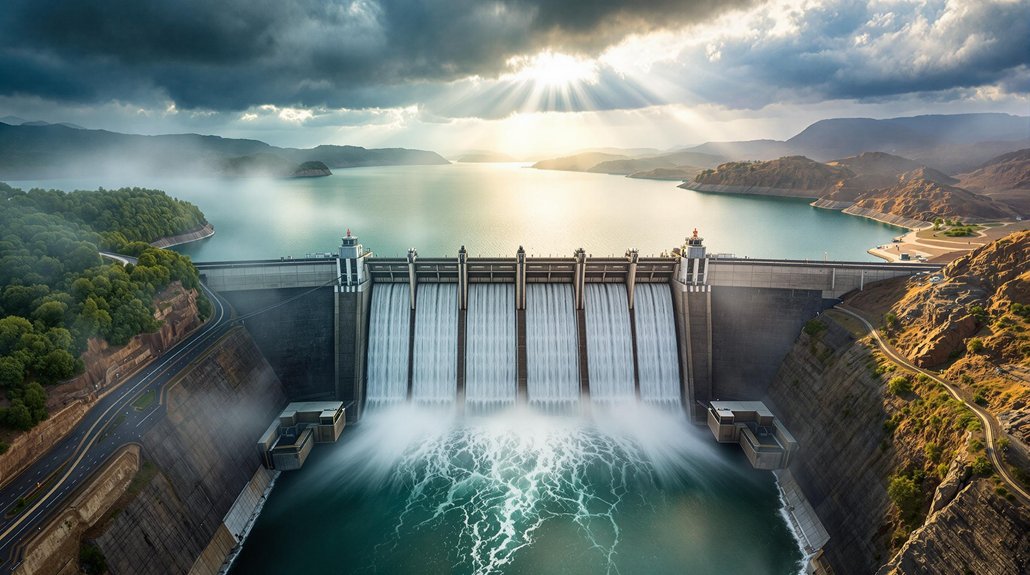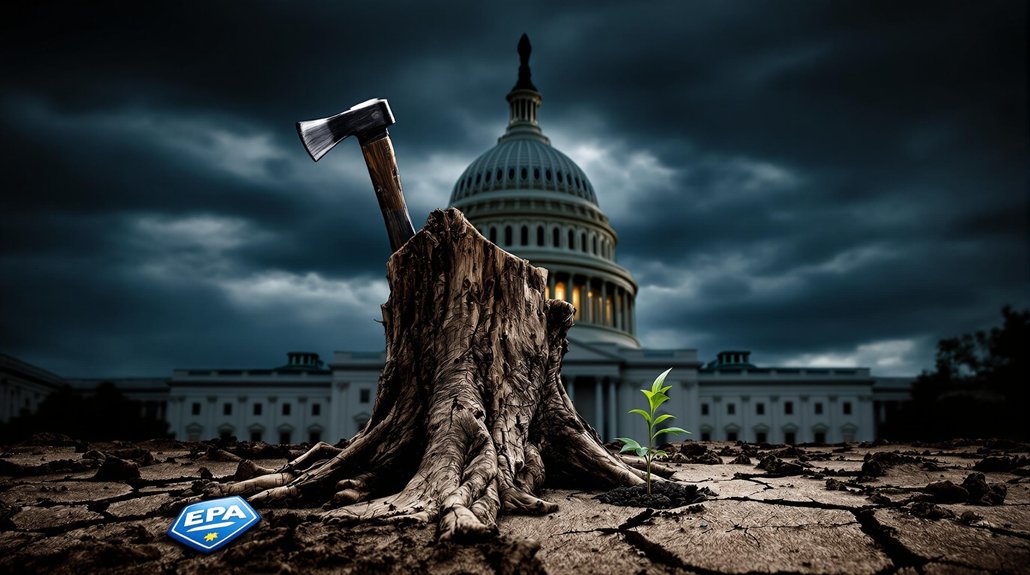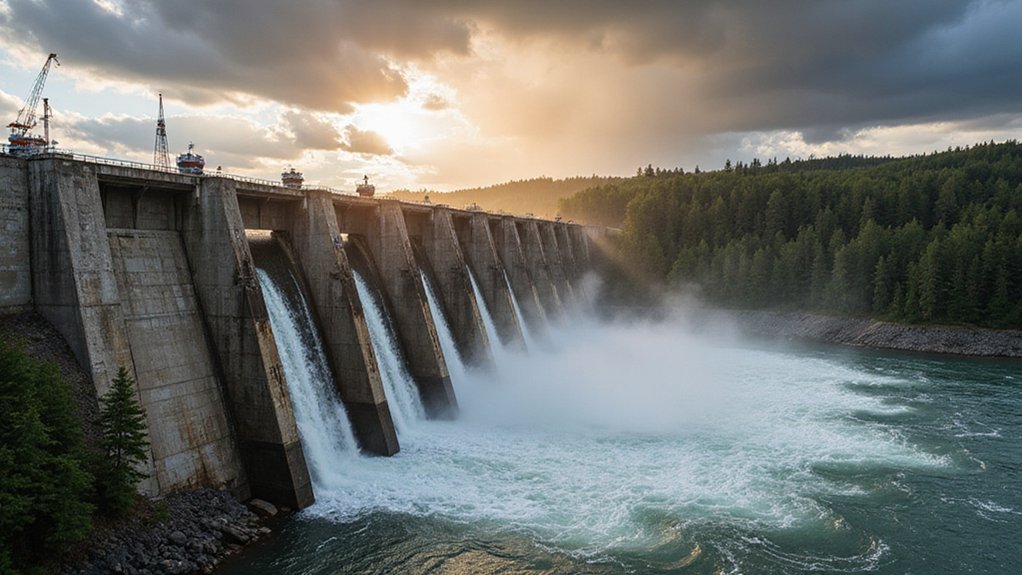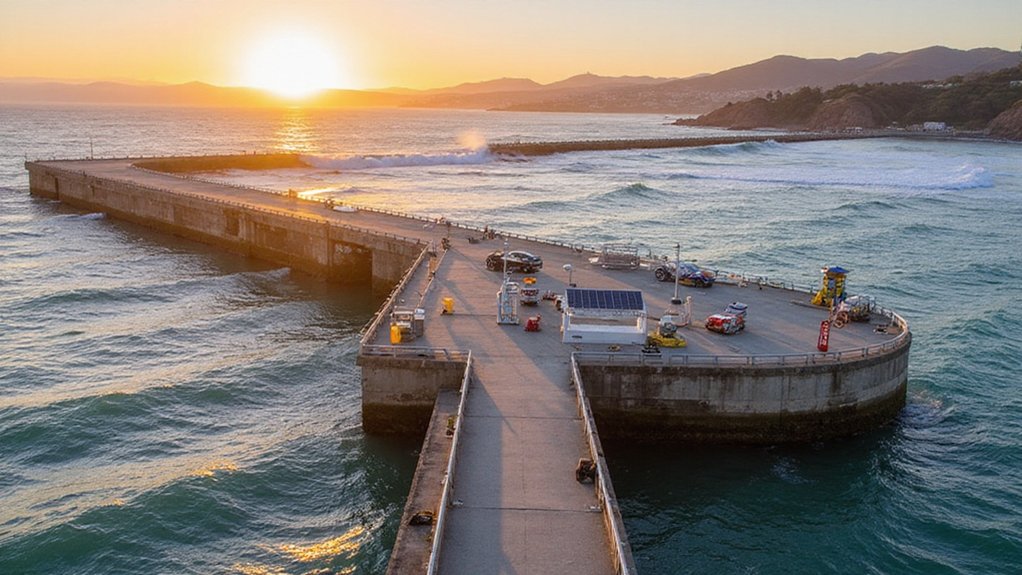Climate change is altering America’s hydropower landscape. While shifting rainfall patterns and extreme weather events disrupt operations, experts predict a 5% increase in U.S. hydropower generation by 2050. Technological improvements and supportive policies are helping the sector adapt. Regional responses vary: the Pacific Northwest leads production while the Southwest battles drought conditions. Improved turbines and AI optimization offer solutions as the industry balances power needs with environmental concerns. The timing of these changes remains the industry’s biggest challenge.
In the midst of growing climate concerns, hydropower stands poised to play an essential role in America’s energy future. Climate change is reshaping how this renewable energy source operates across the country. Changes in rainfall patterns are affecting water availability for power generation. At the same time, extreme weather events disrupt operations more frequently than in the past.
The timing of these impacts remains unpredictable, creating challenges for energy planners. Glacial melt and rising temperatures are changing seasonal water flows in many regions. Despite these challenges, experts predict U.S. hydropower generation will increase by 5% by 2050. New research suggests winter generation could increase by 12% in the near term as precipitation patterns shift.
Climate uncertainty challenges planners, yet U.S. hydropower is projected to grow 5% by mid-century despite changing water patterns.
New technology is helping the industry adapt. Improved turbine designs have increased efficiency by up to 3%. Digital tools and artificial intelligence now help optimize plant operations. Environmentally friendly turbines reduce harm to fish and other wildlife. Unlike other renewable sources, hydropower offers 95% availability factor regardless of weather conditions, providing essential grid stability.
These advances come as global hydropower capacity is expected to reach 1,500 gigawatts by 2030. The policy landscape also favors growth. FERC has streamlined licensing processes for new projects. Federal tax incentives support upgrades to existing facilities. Many states now include hydropower in their renewable energy requirements. This support comes as grid reliability concerns highlight hydropower’s value.
Regions across the U.S. are responding differently. The Pacific Northwest remains the largest producer. The Northeast is developing small-scale projects. The Southeast explores pumped storage for grid stability. Meanwhile, the Southwest faces challenges from ongoing drought conditions. The Hydropower Sector Climate Resilience Guide is becoming an essential resource for these regions to safeguard facilities against environmental stressors.
Environmental considerations remain important. There’s growing focus on minimizing ecosystem disruption and improving fish passage. Tribal engagement in decision-making has increased. Projects now often balance power generation with recreation and habitat protection.
The U.S. is working with other countries through the IEA Hydropower Technology Collaboration Programme. These partnerships help share knowledge about sustainable development. While climate change creates uncertainty, America’s hydropower sector appears ready to adapt and grow in the coming decades.









